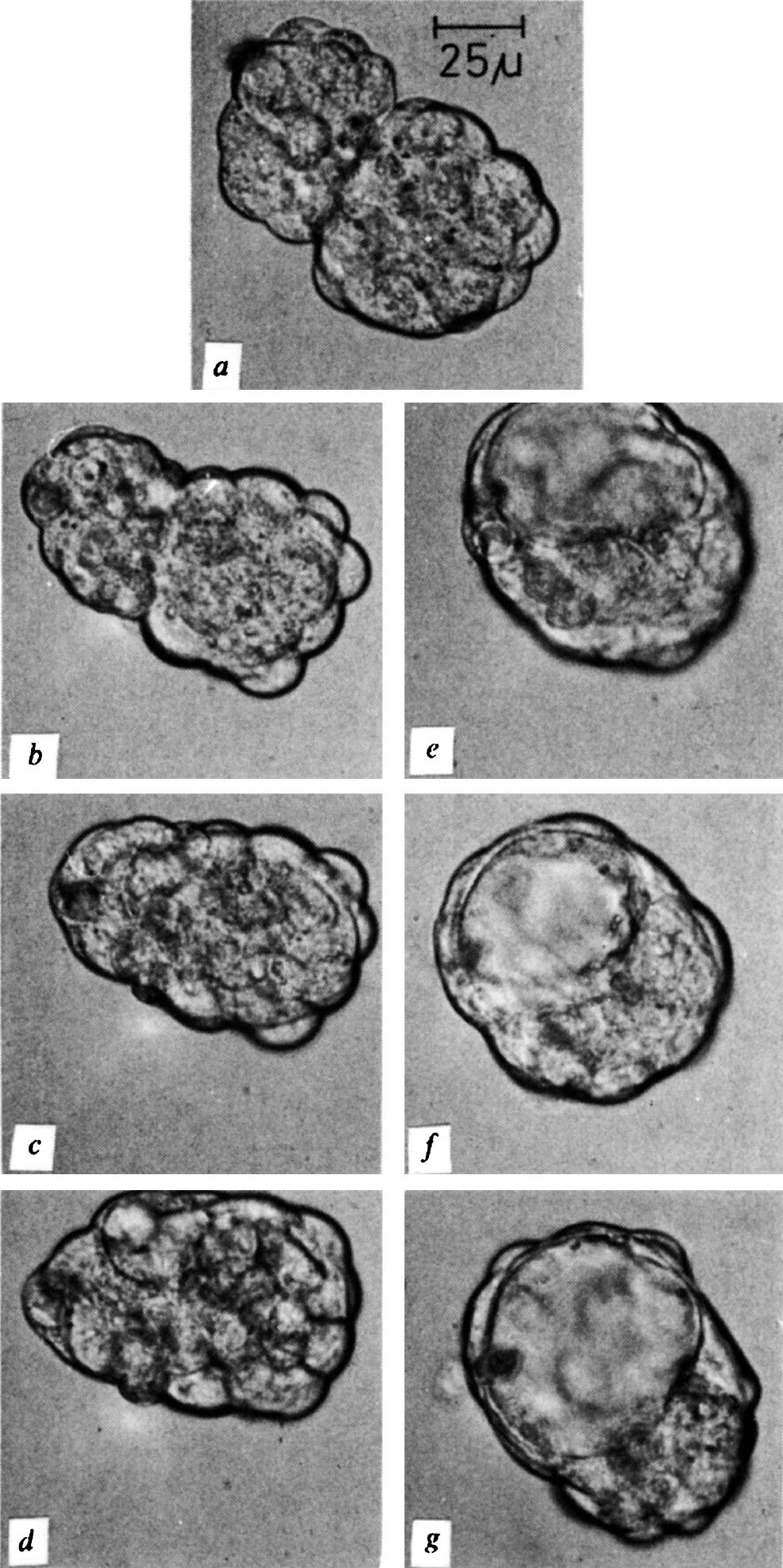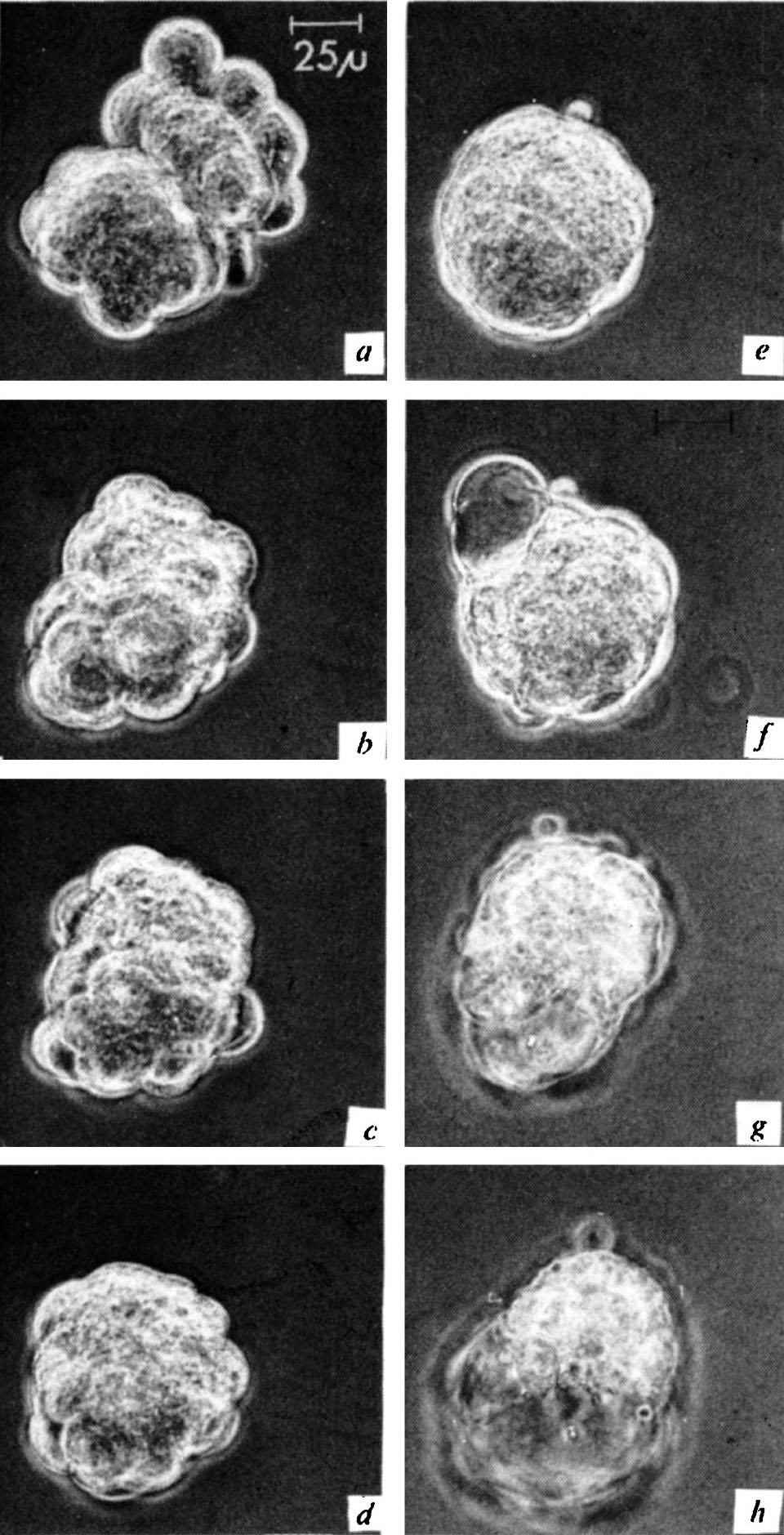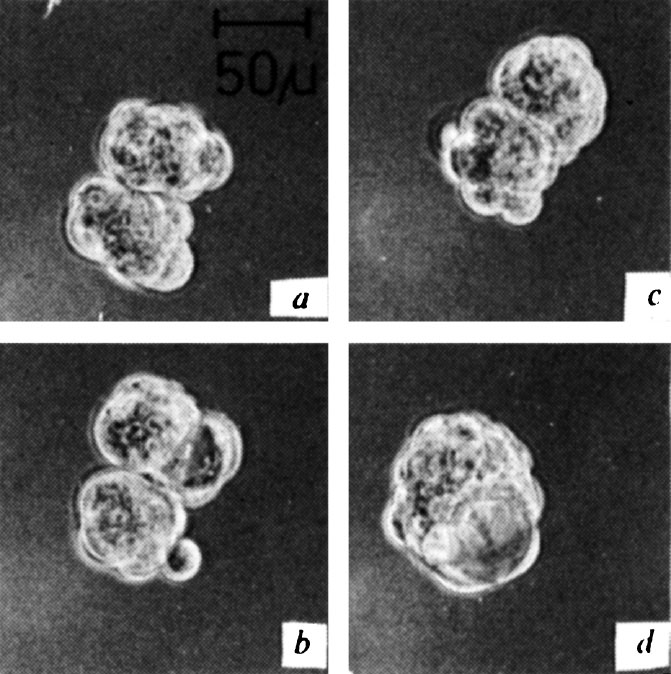




 Fusion of Rat and Mouse Morulae and Formation of Chimaeric Blastocysts
Fusion of Rat and Mouse Morulae and Formation of Chimaeric Blastocysts
G. H. Zeilmaker
Editor’s Note
Over ten years earlier, Polish embryologist Andrzej Tarkowski made chimaeric mice by fusing together eggs taken from different mouse strains. Here, Gerard H. Zeilmaker manages to fuse early mouse embryos with early rat embryos to produce chimaeric blastocysts—slightly more-developed embryonic structures containing a mix of mouse and rat cells. The study paved the way for production of viable intraspecies chimaeras, such as the goat-sheep mix or “geep”, which has helped answer fundamental questions about development. The fusion of human DNA with bovine and rabbit eggs has since seen early-stage chimeras yield human stem cells without the need for human eggs, a major hurdle in stem cell research. These techniques for creating chimaeras could also help save endangered species. 中文
THE induction of chimaerism by the aggregation of blastomeres of different mouse strains is one of the most remarkable recent contributions of experimental embryology 1,2 . 中文
Last year it was pointed out (Dr. A. McLaren, private communication) that the possibility to fuse morulae of different species had not been sufficiently explored 3 . I therefore undertook a series of experiments to investigate whether aggregation of rat and mouse morulae can be induced, using basically the same techniques as those for aggregation of mouse morulae 3,4 . 中文
Mouse morulae (C3Hf×Swiss, 8-16 cell stage) were flushed from the utero-tubal region with culture medium on day 2 of pregnancy at 21:00 h, day 0 of plug, 14 h of light, 10 h of darkness, the middle of the dark period at midnight. Rat morulae (R, Amsterdam Wistar, 8-16 cell stage) were isolated by flushing on day 3 at 21:30 h. The isolated morulae were stored separately at 37℃ under oil and 5% CO 2 in air in pyruvate containing culture medium 5 . 中文

Fig. 1. a , Mouse (left) and rat morulae in apposition, shortly after withdrawal of egg holders. Developmental stages after 2 ( b ), 4 ( c ), 6 ( d ), 8 ( e ), 11 ( f ) and 12.5 h ( g ). In d the blastocoelic cavity is formed.

Fig. 2. Mouse (left) and rat (upper right) morulae in the process of fusion. Pictures taken after 30 min ( a ), 2 ( b ), 6 ( c ), 8 ( d ), 12.5 ( e ), 18.3 ( f ), 24 ( g ) and 34 h ( h ). Borderline between rat and mouse morulae still visible in ( e ). First cavity formed in ( f ), final cavity in ( g ).
The zona pellucida was dissolved by incubation of the eggs for 3 to 5 min in 0.5% pronase 6 . Final removal of the zona occurred in culture medium by forcing the eggs through a narrow pipette. In each experiment one mouse and one rat morulae were brought into contact in an oil drop culture at 37℃ by means of 2 egg holders with a closed lumen 7 driven by a micromanipulator. During this apposition phase, which lasted 20 to 30 min, the Petri dish was not closed but a humid gas stream was directed over the oil surface in order to maintain p H and osmolarity of the medium. 中文
After removal of the egg holders the development of the pair of morulae was followed continuously with a time-lapse movie camera connected to the inverted microscope. Photographs were taken every 30 s with flash light. 中文
A total of sixteen identical experiments were carried out and, in twelve, successful aggregation had occurred in which both aggregate partners showed active proliferation as judged by the temporary bulging of dividing cells at the surface of the large morulae. Sometimes the individual morulae could be recognized for a long time after aggregation by a slight indentation. The way in which the blastocoelic cavity formed varied. In certain cases it appeared where the junction between the two morulae could be seen earlier (Fig. 1 b-d ), in others an abortive blastocoelic cavity formed in one of the partners (Fig. 2 f ), which disappeared later. In the same aggregate the lasting cavity formed in the other partner (Fig. 2 g ). In one experiment one of the aggregate partners formed a cavity before the cell mass had become round (Fig. 3 b ); this disappeared and a final one was formed after aggregation (Fig. 3 d ). The pictures and analysis of the time-lapse photographs show that both rat and mouse cells contribute to the formation of a large blastocyst. 中文

Fig. 3. Fusion of rat and mouse morulae after formation and disappearance of a cavity in the mouse morula. Pictures taken at approximately 30 min ( a ), 6.6 ( b ), 10 ( c ) and 19 h ( d ).
A general feature of the chimaeric blastocysts was that the inner cell mass was comparatively large. 中文
Preliminary observations have shown that the developmental stage of the rat eggs is critical for successful aggregation and the use of a micromanipulator was also very helpful. 中文
A copy of the time-lapse movie is available for study. 中文
( 242 , 115-116; 1973)
G. H. Zeilmaker
Department of Endocrinology, Growth and Reproduction, Erasmus University, PO Box 1738, Rotterdam
Received September 29; revised October 20, 1972.
References: